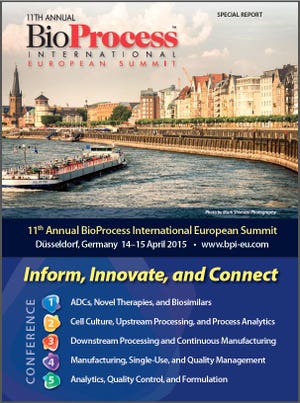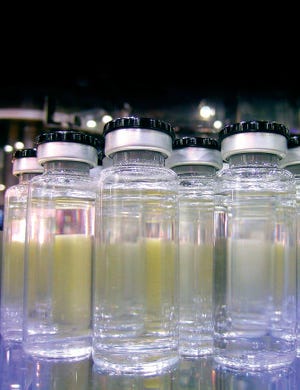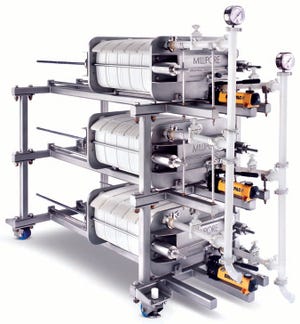In this month’s lineup, you’ll find a common theme of balancing operating costs against
company cultures and corporate philosophies. This is far from new: You can’t responsibly run a business without making such calculations! But the value in taking a fresh look at them lies in how we are forced to dust off and reassess some assumptions (even prejudices). It is easy (and all too human) to persist with outmoded assumptions — and we cannot afford to do that given the rapid rate of change over the past century. Analyzing the repercussions and complex interrelationships of all factors that contribute to success appears to require ever greater sophistication of predictive and analytical methods.
Herein you will find another set of ROI calculations in the continuing series by Sid Jain. He presents a highly pragmatic, multifactorial approach that echoes some technical design-of- experiment reports — and you can decide whether and how to incorporate it into your company’s overall operating strategy. His analysis...
Niche-Disease: Fanconi Anemia
by Cheryl Scott
Fanconi anemia (FA) is a rare, genetic blood disorder that causes bone-marrow failure. It prevents bone marrow from producing sufficient new blood cells and/or makes it produce faulty blood cells. Although FA is a blood disorder, it can affect many organs, tissues, and systems. Children who inherit the condition are at higher risk of being born with birth defects. It is a complex and chronic disorder that can be psychologically demanding. FA is not Fanconi syndrome, another rare and serious condition (of the renal system instead) that is mostly found in children. Both disorders were named for Swiss pediatrician Guido Fanconi, who first identified them in the first half of the 20th century.
FA strikes about one in 350,000 people worldwide. It results from a genetic defect in a protein cluster responsible for DNA repair. Thus, most FA patients develop cancer as well as bone-marrow failure by age 40. Common congenital defects associated with FA include short stat...
https://bioprocessintl.com/wp-content/uploads/2015/03/032015_Dennett_1.mp3
Application of industrial biotechnology has changed dramatically over the past decade. Stainless steel process equipment has largely given way to disposable systems, facilitating easier and quicker process configurations and up-scaling. Suppliers generally made incremental advances in the quality of raw materials and consumables to ensure that those could more readily comply, “off the shelf,” with regulatory expectations. Once out-of-reach analytical equipment such as mass spectrometers and cell analyzers are becoming more common place in development laboratories, which better enables biopharmaceutical companies to characterize products and processes and confirm that specifications are being met. Advances in process and analytical technologies thus have raised the bar of what is possible in-house. Technology transfer continues to play an important role in this modern scenario, whether manufacturing and analytical testing are outsou...
Strategy Forum attendees and presenters discuss the benefits and challenges of using expanded change protocols. (WWW.GRAPHICSTOCK.COM)
The US FDA Office of Biotechnology Products’ quality by design (QbD) pilot program defines an expanded change protocol (eCP) as a particular type of comparability protocol that will “describe the quality by design, risk- based approach linking attributes and processes to product performance safety, and efficacy” (
1
). Sponsors have explored a wide range of potential applications for eCPs (e.g., movement within or beyond an established design space, site transfers, and additional process modifications supported by either a QbD or traditional regulatory submission).
Here we summarize the findings of the California Separation Science Society (CASSS) Chemistry, Manufacturing, and Control (CMC) Strategy Forum titled “Practical Use of Expanded Change Protocols,” which was held in Washington, DC, on 28 January 2013. This forum evaluated the 2008 definition of eCPs in light of ca...
Now in its 11
th
year, the BioProcess International European Summit will host more than 400 bioprocessing professionals from adademia and industry. Five major streams, seven keynotes, poster presentations, and an exhibition hall will take place 14–15 April at the Swissôtel Düsseldorf Neuss in Germany. Together, these opportunities fulfill the conference’s mission: to be the event where the biopharmaceutical industry connects to share new ideas and innovations across all phases of bioprocess development.
In two days, the BPI European Summit will offer presentations from more than 90 speakers, including representatives from major industry facilities and regulatory agencies. BPI editors asked some of them to share perspectives on key issues facing the bioindustry today, including processing innovations, novel technologies, and therapeutic advancements.
Keynotes
This year’s conference will include keynote addresses during both days, before and after sessions (see “Keynotes” box). Manufacturing topics will fo...
Improved Fluorescent Labeling Efficiency of N-Linked, High-Mannose Oligosaccharides: Using 8-Aminopyrene-1,3,6-Trisulfonic Acid (APTS) for Analysis of GlycoproteinsImproved Fluorescent Labeling Efficiency of N-Linked, High-Mannose Oligosaccharides: Using 8-Aminopyrene-1,3,6-Trisulfonic Acid (APTS) for Analysis of Glycoproteins
WWW.PHOTOS.COM
Glycosylation of proteins, including monoclonal antibodies (MAbs), is recognized as important for the efficacy, immunogenicity, antibody-dependent cell-mediated cytotoxicity (ADCC), and complement-dependent cytotoxicity (CDC) of biotherapeutics (
1
–
6
). So research and development of protein candidates is increasingly focused on the effects of glycosylation and how its pathway is affected in the Golgi system of cells involved in biosynthetic processes (
7
). Such attention on glycosylation has helped advance analytical technologies such as high-pH anion-exchange chromatography (HPAEC) (
8
); normal-phase chromatography (NP- HPLC), hydrophilic-interaction chromatography (HILIC) (
9
), and reversed-phase chromatography (RP-HPLC) (
10
–
13
); capillary electrophoresis (CE) (
14
–
19
); and microfluidics (
20
–
21
). Often those are coupled with sensitive detection methods such as fluorescence and laser-induced fluorescence using a number of labeling dyes for profiling N-linked glycosylation.
JIM DELILLO (WWW.FREEIMAGES.COM)
Patient preference and a competitive landscape in the parenteral market have fueled the need for convenient delivery systems and a desire for less‑frequent dosing injections. Monoclonal antibodies (MAbs) often have high dose requirements, so they must be formulated at very high concentrations (
1
). At low concentrations, an antibody solution’s viscosity increases moderately as a function of protein concentration. But at high concentrations (>100 mg/ mL, depending on the molecule), viscosity increases exponentially (
2
,
3
). Thus, a specification for a protein concentration 90–110% of target has little effect on viscosity of a low‑concentration drug product. But the same specification applied to a high‑concentration drug product can lead to significant variability in viscosity within its design space.
Temperature also can influence viscosity. Parenteral drug products are typically stored refrigerated at 2–8 °C. A decrease in temperature will cause viscosity to increase e...
EMD MILLIPORE (WWW.EMDMILLIPORE.COM)
In the manufacture of monoclonal antibodies (MAbs), the first purification step following harvest clarification is normally protein A affinity chromatography because of its high selectivity for IgG and high process yield (
1
,
2
). At this stage, a MAb is eluted from a protein A ligand at low pH and then held or adjusted to a low pH (pH ≤ 3.8) for a given amount of time before pH adjustment, usually ≥30 minutes, in a virus inactivation (VI) step targeted at retroviruses (
3
,
4
). After VI, product pools are adjusted to a pH that is appropriate for further downstream unit operations, which may include one or several additional modes of chromatography, virus filtration, and final formulation (
5
).
During the VI and subsequent pH adjustment steps, operators commonly observe a significant amount of precipitation and turbidity in their product pools (
2
). Precipitants require larger sterilizing-grade filter areas after VI. Components that are generally responsible for ...
https://bioprocessintl.com/wp-content/uploads/2015/03/032015-Lyons-Multidisciplinary.mp3
WWW.PHOTOS.COM
Optimizing antibody manufacturing processes has gone beyond the first-order goal of achieving elevated protein titers and now also focuses on understanding biologic and manufacturing process variables that define cellular machinery and protein quality. A holistic approach to biotherapeutic manufacturing incorporates several applied disciplines such as biology, engineering, process control, signal processing, and modeling to reduce the “black-box” model of cell- based protein production into an operational design space. This is in line with the US Food and Drug Administration’s quality by design initiative.
Ongoing work at Bend Research (a division of Capsugel Dosage Form Solutions) is focused on developing and implementing a process-development methodology that applies state-of-the- art automated sampling technology with on-line and at-line cell-state monitoring technologies — both novel and existing — ...
Before the ratification of regulatory guidelines from The International Conference on Harmonisation of Technical Requirements for Registration of Pharmaceuticals for Human Use (ICH) Q8–Q11 (
1
–
4
) — whose scope includes raw materials for biopharmaceutical production — many drug manufacturers chose the most cost-effective and readily available raw materials sourcing options without specifically considering the provenance of those materials. Depending on the chosen supply chain, such materials could be of widely varying quality and not necessarily suitable for a destined application. Raw-material sourcing for bioprocesses is not a one-size-fits-all operation.
Why Source Matters
When sourced materials exceed quality standards, excessive cost is the main issue. However, in the case of substandard materials, patient-health risks become the primary cause for concern. Perhaps the most well-known example of the detriment that substandard materials can cause is the 2008 heparin incident. A contract laboratory so...
with Jamina Fiedler, BioGenes GmbH
Biopharmaceutical products must be free of by-products (such as host-cell proteins, HCPs) for approval by authorities such as the US FDA. For that, a clear proof is required of sufficient HCP detection by the HCP assay used. The two-dimensional (2D) DIGE Western blot method is the standard technique for detection of HCP coverage. Colorimetric detection has several limitations that can be overcome by the use of fluorescent detection.
Jamina’s Presentation
Practical differences between 2D DIGE Western blotting and a colorimetric procedure are the DIGE labeling of samples before their application and the use of fluorescent-labeled antibodies. All other steps such as sample preparation, isoelectric focusing (IEF), sodium dodecyl sulfate (SDS) polyacrylamide gel electrophoresis (PAGE), and Western blot transfer are the same. We work with GE Healthcare equipment and 20 × 26 cm (~7.9 × 10 in) gels. That large gel size improves resolution.
The first advantage of fluorescence is ...












